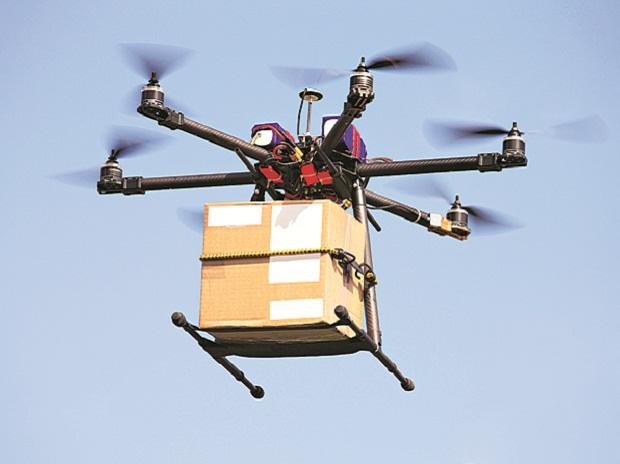In August, govt released the first version of drone policy.
Article
Source BS
: The government has proposed allowing delivery of goods by
drones,
paving the way for commercial applications in the field. In drone
policy 2.0, unveiled on Tuesday, the government has proposed
permitting their operations beyond the visual line of sight.
“Commercial
UAS (unmanned aerial system) operations will foster various new forms
of air freight capabilities, such as creation of supply chain relay
networks for delivery of payload, transport of temperature-sensitive
commodities like bodily organs, emergency or just-in-time deliveries
of life-saving medicines or safe blood for transfusions and
collection of patient specimens for delivery to laboratory for
time-sensitive testing,” the document said. The updated version of
drone policy was unveiled by Minister of State for Civil Aviation
Jayant Sinha at the Global Aviation Summit.
“There
are opportunities for our aviation sector and for India's start-up
industry as India is set to become a global leader as far as the
drone ecosystem is concerned. It's important for us to have a policy
road map and regulations that support the growth of the drone
ecosystem,” Sinha said.
A
person aware of the development said that delivery by drones was
permitted after multiple food delivery companies such as Zomato and
Swiggy had demanded it.
However,
the proposal is a recommendation and a task force led by the civil
aviation secretary and the director general of civil aviation
finalise the guidelines. “The technical specifications and finer
details will be finalised by the task force,” the person said.
E-commerce
major Amazon has used a drone to deliver a bag of popcorn to an
address in rural England in the first commercial outing for a
technology that is the US group’s boldest step towards automating
deliveries.
For
the same purpose, the government intends to build ports where drones
can land and take off.
“Droneports
are proposed to be designated areas dedicated to facilitate take-off
and landing of the drones. Licensing of such ports may be granted by
the authorities concerned upon meeting the prescribed technical
specification,” the document says.
In
August, the ministry released the first version of drone
policy, which makes it legal for individuals and companies to
operate drones in certain areas other than those barred for security
reasons. The ministry, however, held back approval of the commercial
use of drones as taxis, delivery vehicles, and other services.
According
to the regulations, there are five categories of drones by weight:
Nano, micro, small, medium and large. For flying in controlled
airspace, the filing of a flight plan and obtaining Air Defence
Clearance (ADC)/Flight Information Centre (FIC) number will be
necessary. The regulation defines “no-drone zones” as areas
around airports, near the international border, Vijay Chowk in New
Delhi, state secretariat complexes in state capitals, and strategic
locations and vital military installations.

No comments:
Post a Comment